“Items in the news remind us that a new generation has arisen that knows nothing of the intricacies of the three pedals of the old ‘Model T’ steerage or the most palatial suite of a modern luxury ocean liner or the cinders, soot, and smoke of the old coal burning steam locomotive. But those who do find various modes of expression for their particular sentimental attachment.” – Roy L. Peterson, Belvidere Daily Republican, September 25, 1967
There are around one thousand preserved steam locomotives in the United States today. Most are confined to parks or museums. The lucky few have been restored to operation and pull special trips several times per year, bringing the lucky passengers on a trip back in time. However, even after being preserved, some locomotives were still ultimately lost to the cutting torch. Locomotives that met such fate that come to mind include Texas & Pacific No. 638, Southern Pacific No. 743, and of course, the Chicago Burlington & Quincy No. 5632 and Grand Trunk Western No. 5629. This is the story of the latter two, the locomotives that they were preserved with, and the man behind it all—Dick Jensen, a pioneer in the effort to preserve steam locomotives.
Part I: A Passion For Steam
By 1924, the Grand Trunk Western Railway needed a steam locomotive that could haul passengers and do it fast. The answer was the K4 series of 4-6-2 Pacific type locomotives, the first of which (K4A) were erected at the American Locomotive Company’s shops in Schenectady, New York in January and February of 1924. (After the first order, the GTW would turn to Baldwin for future K4s). The K4As were equipped with 73-inch drivers and produced 41,000 pounds of tractive effort. Designed to pull commuter trains in Michigan, the engines could easily reach 100 miles an hour with a full passenger train (in the later years of their service, they also pulled freight trains).
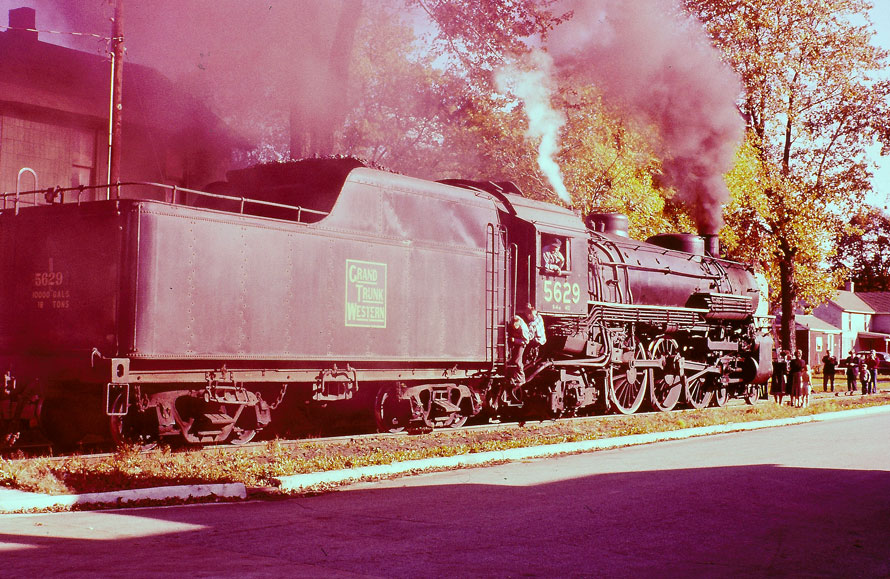
The third locomotive of the K4A class, No. 5629 (serial 65290), was completed in February of 1924 and delivered to the GTW via the New York Central in March of that year. The 5629 was immediately placed into service, and would serve a mostly uneventful 35-year career on the GTW until being retired in 1959.
During the 1950s, the GTW became one of the last major railroads in the country to use steam locomotives, and railfans from all over flocked to Michigan to document the last major steam operation in the Great Lakes region. One of these railfans was Chicagoan Dick Jensen, who would eventually take his hobby to points far beyond railfanning.
Richard Hans Carl “Dick” Jensen was born on June 30, 1931. Despite the financial effects the Great Depression had on his family, his father, Carl Jensen, was able to gather enough money to get him an electric train set for Christmas in 1937. Soon after, Dick became hooked on trains. In the 1940s, he acquired his first camera and quickly became a railfan. By the 1950s, he was traveling all over the United States and Canada to document the final days of steam on North American railroads.
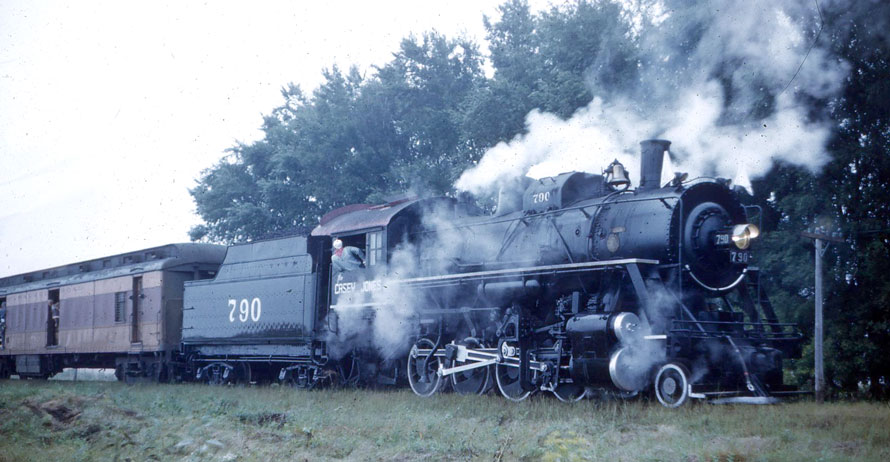
In addition to chasing and riding steam trains in regular service, Dick and his friends would often attend railfan events and excursions involving steam locomotives. Dick noticed that these events were making quite a bit of money. While ticket prices were far from the $150 or more we see for steam excursions in the 21st Century, they were still bringing in some serious cash. He thought that having his own locomotive and running excursions would be a good way to make some extra money and to expand his railroading hobby. He began saving up money from his job, a bread delivery man for the Catherine-Clark Baking Company of Oconomowoc, Wisconsin, and started looking for available steam locomotives.
On September 27, 1959, shortly before retirement, GTW 5629 pulled an excursion trip for the Michigan Railroad Club from Detroit to Bay City, Michigan. Dick was on board that trip and fell in love with the venerable Pacific. The 5629 was a good excursion locomotive—it could pull a lot and travel at high rates of speed.
If you ask what Dick Jensen was like to his friends and colleagues, they will tell you he was a bit crazy.
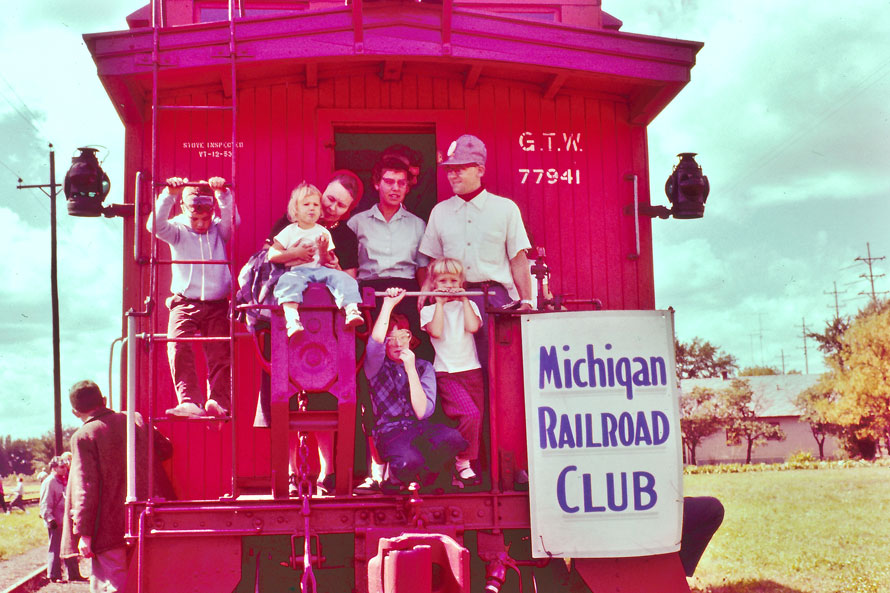
After learning that the 5629 was to be retired and sold for scrap shortly after the trip, he decided it was the locomotive for him. In March of 1960, he made a deal with the GTW to purchase the 5629 for approximately $9,540.40 scrap value. The locomotive was moved on its own wheels to a rented siding in Hammond, Indiana at a Baltimore & Ohio yard where Dick, with the help of Irv Kaufran, the Homewood, Illinois roundhouse foreman for the Illinois Central, got the 5629 running in just over a year.
If you ask what Dick Jensen was like to his friends and colleagues, they will tell you he was a bit crazy. In mid-1961, during an interview with the Chicago Tribune who was doing a story on the 5629’s restoration, he explained that he was working up to 50 hours a week on the locomotive. At the time, he lived on the north side of Chicago and had to make a two hour round trip to Hammond to work on it. One night, he fell asleep while working and woke up underneath the locomotive at 3:30 AM. “I decided that maybe I had been overdoing it a little and went home to bed,” he told reporters. After he returned home, he got about three hours of sleep then went to work, and went back to the engine to do several more hours of work the next day.
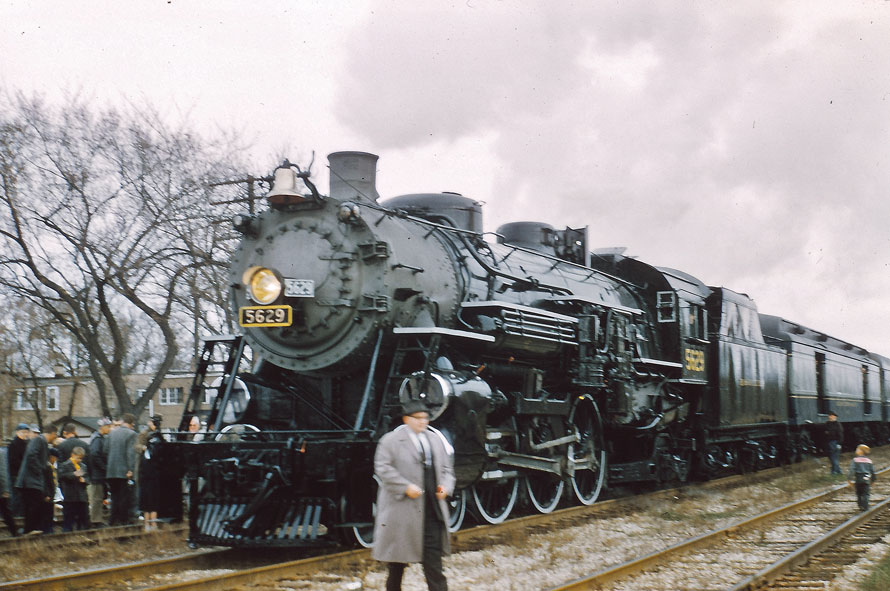
At long last, the 5629 was fired up under private ownership for the first time in early October of 1961. It made a few test runs around the Hammond area then returned to the B&O yard for final preparations for its first excursion trip—a “complete tour” of the Baltimore & Ohio Chicago Terminal Railroad. Originally, the trip was scheduled for October 22, 1961, but for reasons unknown it had to be postponed until November 5.
Following its first excursion, the 5629 would run several more trips over the B&OCT. During this time, the locomotive was lettered for the Baltimore & Ohio. The trips were sponsored by the Railroad Club of Chicago for their “Iron Horse Excursions” program. Dick arranged for the 5629 to be stored at the B&O roundhouse in Hammond until a more suitable location could be found. The 5629’s new life had finally begun, and it quickly became a railfan-favorite for excursion trips.
In 1964, Dick became friends with Robert McMillan, president of the Chicago & Western Indiana Railroad. The C&WI was a small switching railroad that owned Chicago’s Dearborn Station. They leased it to the major passenger lines that used it and helped service their equipment, and provided switching services for local industries. A roundhouse at 49th Street in Chicago (railroaders called it the 47th Street Roundhouse) was used to service the passenger steam locomotives that came into Dearborn. By the time McMillan became president in 1963, steam was gone from all railroads that served Dearborn, so he generously allowed Dick Jensen to use a portion of the roundhouse to store and maintain his locomotives. This agreement was finalized on July 16, 1964. As a thank you for his generosity, McMillan, a lifelong steam fan, was allowed to run the 5629 on break-in runs over the C&WI at the beginning of each excursion season.
. . . his bathroom was full of steam locomotive builder plates, and the rest of his house was filled with other locomotive parts.
In addition to the 5629, the C&WI roundhouse was also, albeit briefly, the home of former GTW 2-8-2 No. 4070, which was being leased from fellow steam collector Lou Keller by the Midwest Railway Preservation Society. MRPS had Dick and his crew look after the locomotive for them and also had them help out with running the 4070 on excursions out of Chicago. Around this time, Dick started the Midwest Steam Railfans Association, a group to maintain and operate the 5629 and 4070.
Dick began collecting locomotive parts for reuse on the 5629 and for his personal collection. He became a regular customer to scrap dealers around Chicago, and would walk around the yards with some soapstone chalking “Save–RJ” on anything he wanted. A couple people said that his bathroom was full of steam locomotive builder plates, and the rest of his house was filled with other locomotive parts. Before long, Dick had several freight cars and a baggage car full of tools and spare parts for working on the 5629. He also acquired a spare set of running gear from sister locomotive 5634.
Dick was also known to have an extreme sense of aesthetics. Under his ownership, the 5629 was modified extensively from its original GTW appearance and was sporting parts from dozens of scrapped locomotives from other railroads. Most notably, the bell placement had been changed, a new headlight from an Illinois Central locomotive was added, and the smokebox was painted a lighter color than the rest of the locomotive to make it resemble a standard United States Railway Administration design.
In 1966, the 5629 made several long distance runs. In preparation for these trips, Dick purchased a tender from a scrapped Soo Line 4-8-2 to replace the 5629’s original GTW tender. This new tender was considerably larger than the original, and greatly increased the fuel capacity of the 5629 which reduced the amount of stops on excursion trips. The original tender was placed on a spur at the C&WI roundhouse and used for coal storage; it is unknown to this author what eventually became of it.
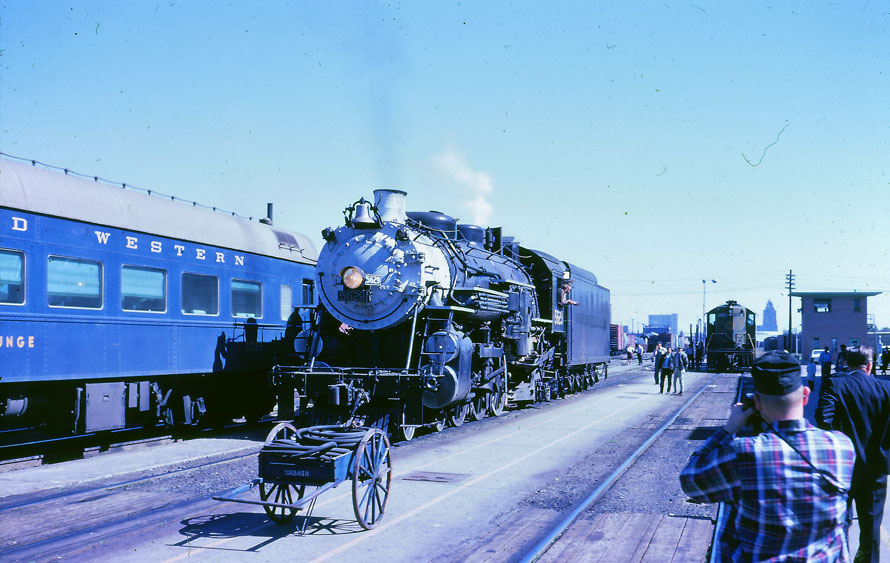
The first of these long distance trips occurred in May, 1966 when the 5629 traveled over the Norfolk & Western (formerly Nickel Plate) to Indianapolis, Indiana to pull a series of trips to Noblesville, Indiana and return to celebrate Indiana’s 150th anniversary. During one of the trips, the 5629’s water injector malfunctioned and the boiler was not receiving enough water. As a safety precaution, N&W management who were riding the train ordered the crew to stop on the mainline and drop the fire. Diesels were used for the rest of the trip while the disabled 5629 was towed back to Indianapolis. Dick drove up to Chicago to get tools and new parts for the injector, and the 5629 was under steam the following day. It completed the event without any other major issues.
Following the Indianapolis trip, the 5629 traveled engine-lite over the Norfolk & Western to Decatur, Illinois in preparation for a proposed tourist train operation out of Springfield on the Illinois Central that was to lease the 5629 for power. After spending six weeks in storage at Decatur, it was moved to another storage site in Springfield. After a few more weeks, the tourist train operation was cancelled for reasons unknown, and the 5629 returned to Chicago.
The next 5629 excursion of the 1966 season was the first of many trips over the Grand Trunk Western out of Chicago. The train travelled from Dearborn Station in Chicago to South Bend, Indiana and return. After the first GTW trip, the 5629 traveled to Detroit, Michigan where it was placed into temporary storage at Milwaukee Junction with Reading No. 2102, which was also being used for excursions over the GTW at the time. The 5629 powered an additional excursion over the GTW out of Detroit in November, then returned to Chicago for the winter.
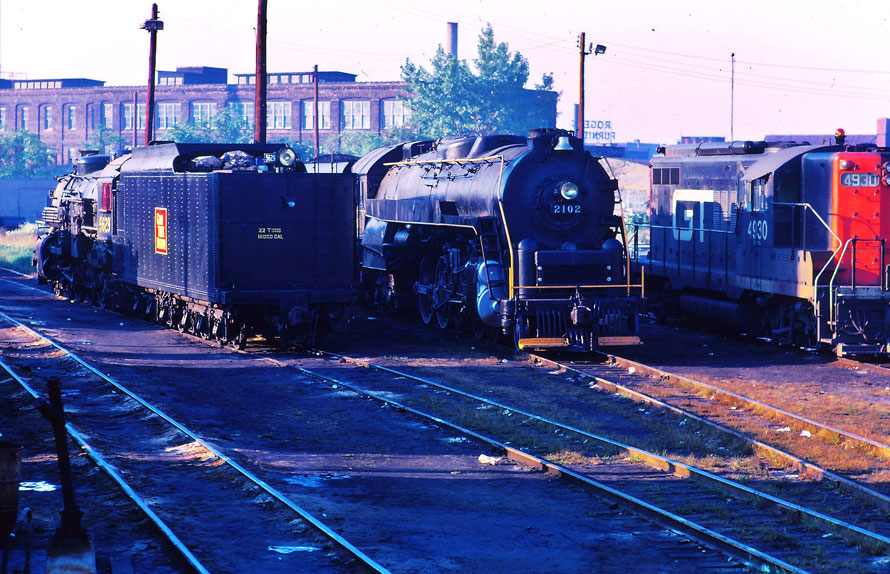
The Grand Trunk Western’s former road foreman of engines, Theodore R. “Bud” Young, was selected to be the engineer for the trips over the GTW. Bud Young and Dick Jensen became friends during the first few trips, and because of their friendship and Bud having rights over the entire railroad, he became the 5629’s regular engineer for the remainder of its excursion career.
Bud Young was born in 1906 in Chicago. He and his family moved to Battle Creek, Michigan in 1912, where he would eventually get a job shoveling coal in the Grand Trunk Western’s yard at age 13. In 1924, he got a regular job as a steam locomotive fireman and became an engineer in 1939. Shortly after World War II, he was promoted to the GTW’s road foreman of engines and held the position for several years before going back to regular engineer duties.
Bud was a very interesting person. His preferred run was a hotshot passenger train to Chicago that was scheduled in a way where he could overnight in Chicago and watch the local opera. He wore pressed bibs, a button up shirt and a tie on the job and did his best to stay as clean as possible. Former 5629 volunteer J. David Conrad explained that once on a 5629 excursion, Dick was filling up the 5629’s hydrostatic lubricator with oil while the train was in motion. Dick did not close a valve tightly enough and hot oil shot all over him and Bud. Bud yelled at Dick to which Dick responded, “Gee Bud, why are you so sore? Most of the oil is on me!”
In 1967, the 5629 ran several more trips over the GTW out of Chicago. During the summer, it traveled to Baraboo, Wisconsin to pull the Circus World Museum’s 1967 Schlitz Circus Train between Baraboo and Milwaukee over the Chicago & Northwestern. The 5629 replaced Chicago Burlington & Quincy 2-8-2 No. 4960, the usual locomotive for the Schlitz train, which was retired the previous year. The 5629 returned in 1968 to pull the train again.
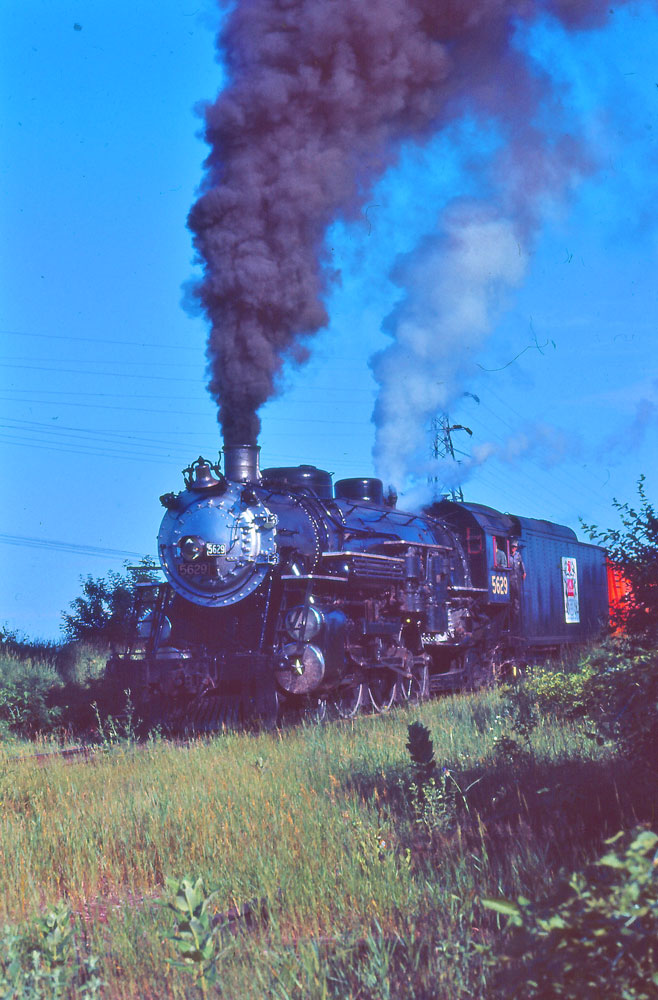
While Dick Jensen was professional with running steam excursions, he was the exact opposite when it came to business meetings. In 1968, Graham Claytor, president of the Southern Railway, traveled to Chicago accompanied by Bill Purdie, who was in charge of the Southern’s steam program, to meet with Dick with hopes of striking a deal to purchase the 5629 for use in their program. Their intention was to cosmetically alter it to resemble a Southern Ps4. Dick arrived to the meeting extremely late, almost causing Claytor and Purdie to miss their train back home. Covered head to toe in soot and grease from working on the 5629, Dick declined the Southern’s fairly big offer (exact amount unknown) believing the 5629 was worth an unreasonably higher amount. Talk about leaving a bad impression!
Expanding the Fleet
With all the success from the 5629, Dick wanted to expand his collection to include other steam locomotives as well. In early 1965, while on a railfanning trip in Kentucky, he discovered and later purchased former Georgia & Northern 4-6-0 No. 102 (serial 64280), a 1923 product of ALCO. The 102 had worked for many years at the Crabtree Coal Company of Ilsley, Kentucky following its career on the GAN, and Dick saved it just before it was supposed to be cut up. He and a couple of his friends returned to Ilsley sometime later and prepared it for shipment to Chicago on a flatcar. It arrived in the Windy City during the summer of 1965 and would remain on the flatcar in a railyard for the next 26 years.
Later that year, a friend of Dick’s who owned a scrap yard asked for his assistance with moving some equipment to his yard to be cut up. As a thank you, Nickel Plate Road 2-8-2 No. 965 was offered to Dick and he set up a time to go to the scrap yard to look it over before buying it. Unfortunately, miscommunication between the scrap yard owner and his employees led to the scrapping of No. 965 as the employees did not know that Dick was interested in it. This was a terrible loss for NKP steam fans, as No. 965 was the last of its type.
After the 965 fiasco, Dick Jensen went to the Frisco to inquire about purchasing one of their 1500-series 4-8-2s. Louis W. Menk, president of the Frisco at the time, told Dick that he did not want to sell him one of the engines because it would “come back to haunt me later.” Menk was notorious for eliminating steam on railroads as fast as possible, leaving almost nothing for preservation. However, Dick Jensen would eventually get Menk to sell him two locomotives from the Chicago, Burlington & Quincy.
From the late 1950s to the mid-1960s, the CB&Q owned and maintained a fleet of steam locomotives for use on railfan trips. One of them was O5B class 4-8-4 No. 5632 (serial 6610-7), built at the railroad’s shops at West Burlington, Iowa in August of 1940. CB&Q president and steam fan Harry C. Murphy saved the engine from scrap in 1959 for use in the steam program. Its first excursion assignment was to pull a trip to honor the CB&Q’s Aristocrat passenger train. After this excursion, it became a railfan favorite and would continue to pull trips until November, 1964, when it was taken out of service for an overhaul. At age 72, Harry Murphy retired in October of 1965, and one of his last orders as president was for the rebuild on No. 5632 to continue. Less than two years later, Murphy unexpectedly passed away following a heart attack at his home in Aurora, Illinois.
Murphy’s successor on the CB&Q was none other than Louis Menk. As expected, Menk ordered the CB&Q’s steam program to be shut down after the 1966 season. Infuriated railfans did all they could to save the program, but to no avail. While most of the excursion locomotives were sent to Galesburg, Illinois for scrapping, surprisingly, Menk allowed several to be saved, including No. 5632 which had been dismantled at the West Burlington shops for the rebuild. Less than a month into Menk’s presidency, Dick Jensen purchased it in “kit form” from the CB&Q.
The locomotive, tender, and several boxcars full of parts and tools were moved to the C&WI roundhouse. In September of 1966, Dick returned to the CB&Q and purchased O1A class 2-8-2 No. 4963 (serial 56812), a 1923 product of Baldwin, which was used as a parts source for other locomotives in the steam program.
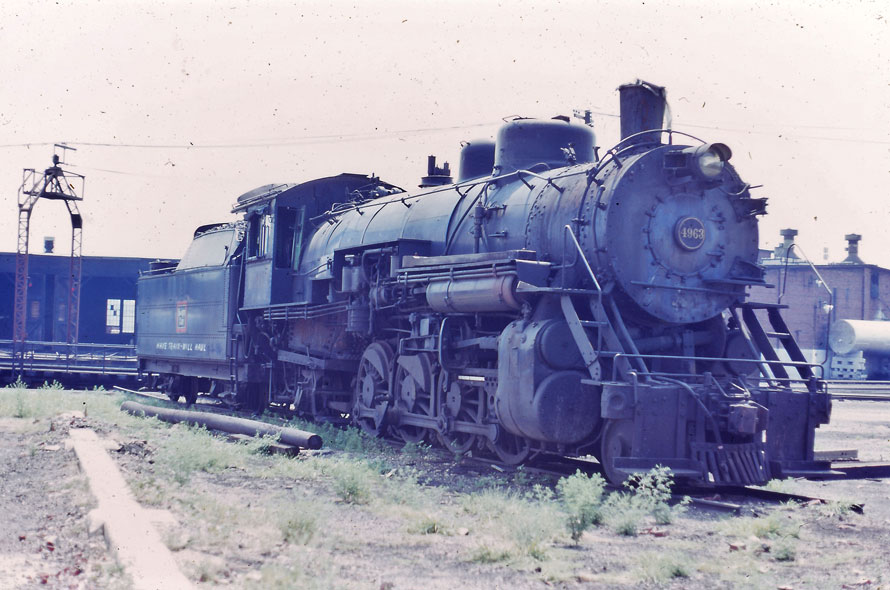
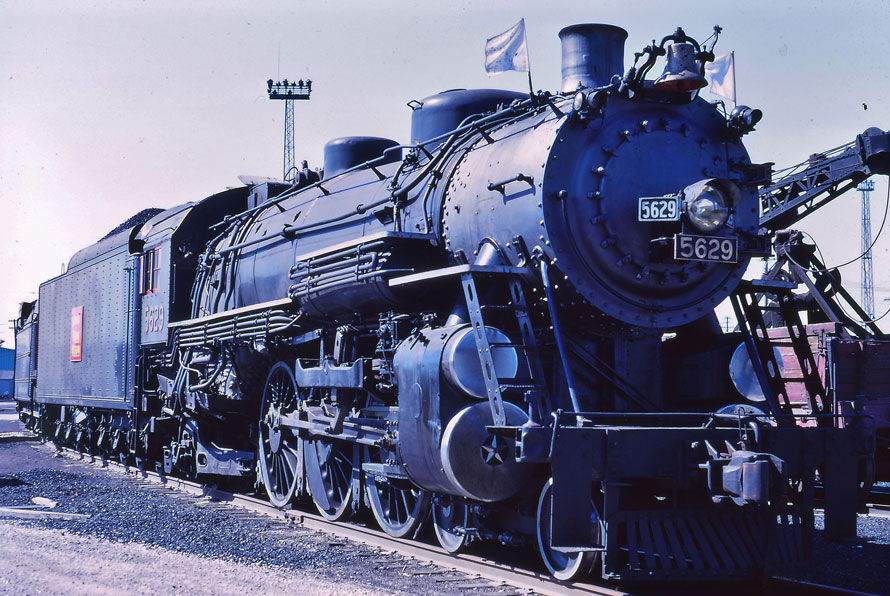
Dick’s intent was to eventually return both locomotives to service, and a portion of ticket sales from GTW 5629 trips went towards their restorations. However, both restoration projects would never get very far.
Thomas Dyrek – Text and photographs Copyright 2021
This is Part One of a two part article. Click here to read Part Two.
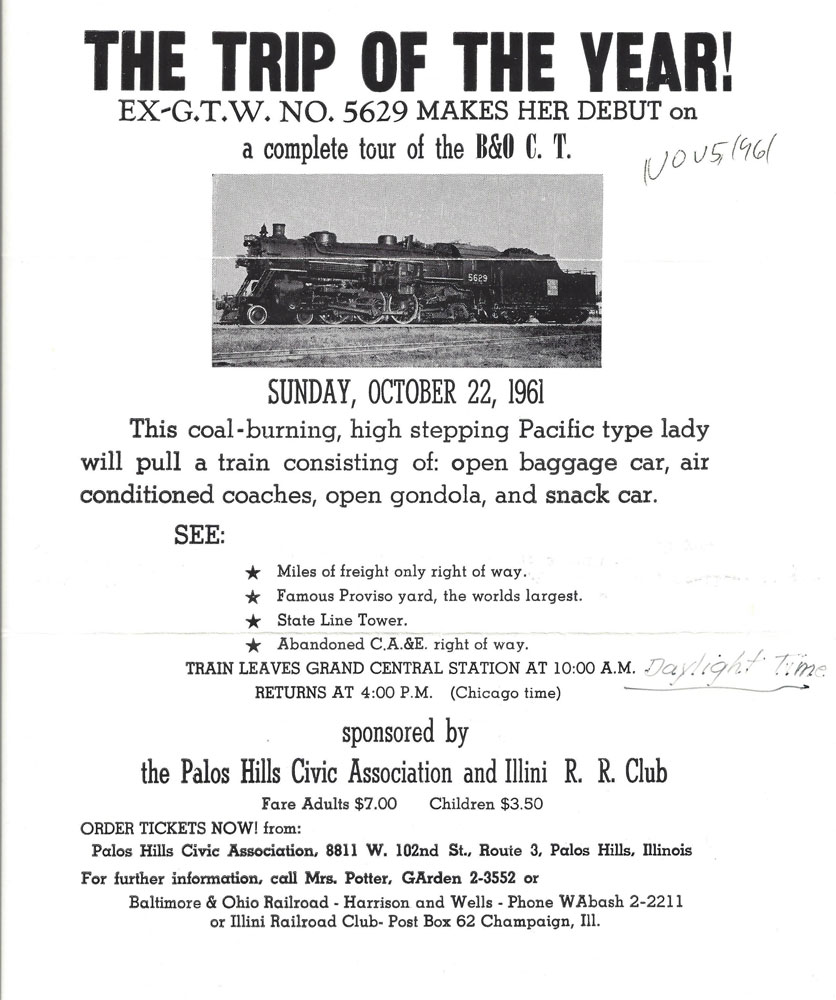
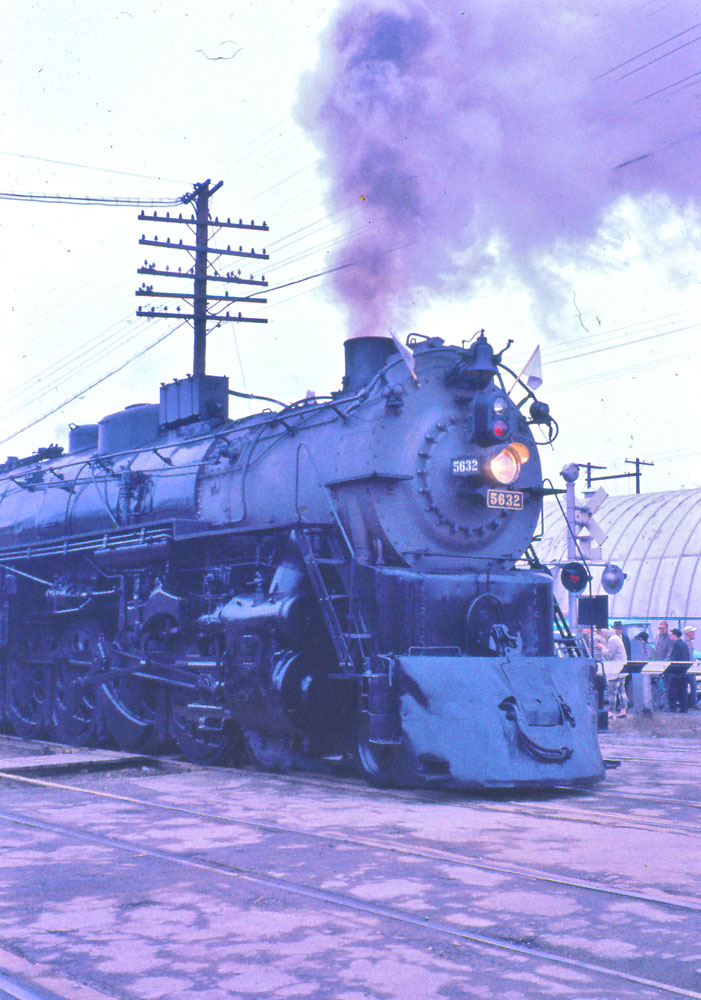
Great story! Sounds like a wonderful man, I look forward to part 2!
In my opinion he really wasn’t. In Part 2 we will find out why
The description of 5629 in Indianapolis is incorrect. 5629 had a feed water heater and an injector to supply water to the boiler. The injector stopped working and the feed water heater couldn’t supply enough water on its own. So, N&W officials made Mr. Jensen drop the fire where it was (in mid-excursion to Noblesville). It was towed back to the Indianapolis N&W (ex-NKP) roundhouse and Dick drove to Chicago to get parts for the injector. By the next day, 5629 was under steam again and finished it’s excursion schedule of several trips. I was there and filmed the fire being dropped. Mr. Jensen allowed me to ride 5629’s cab while the NKP diesels towed it back to the roundhouse. The film is in our video “Reflections of American Railroading” which features 16mm film by Indianapolis resident Dr. Howard Blackburn. It was “Doc” Blackburn who organized those 1966 trips which celebrated Indiana’s Sesquicentennial. -Jim Herron, Herron Rail Video
Thanks for the correction, Jim. That particular event was very difficult with research as there were about a dozen different stories about it that I found. I’ll make changes to my notes.
Thomas
My photo of the runby on the first trip of the locomotive on the B&OCT shows it had a Grand Trunk Western herald on the tender.
Disregard my first comment as I found that my photo was of a later trip, not the first one. I rode on three of his trips in all.
Sometime in the 70’s, when I was little, my father who had grown up on the SSide of Chicago and worked the stockyards, took me on a bit of jaunt. Last bit of the Chicago stockyards, Stockyard Inn, and then we stopped on a street in/around the river and downtown Chicago. We walked up the tracks a bit from the street with RR bridges around us and sitting on a siding was I believe was this engine. It did not have any RR name logos on it. It was a sunny, fallish day. He hoisted me up to the cab and it was in rough shape. I played around on it a bit and I’m pretty sure it was 5629. I remember the huge driving wheels and the white trim paint and rust. My Dad said he’d ridden on it and sister locos while working in the Stockyards for Wilson Co. He also said his Grandad had been a GT locomotive engineer. I remember leather bound thick books about maybe 6 inches high and wider that were all about the engines and how to operate them. I saw his employee card/pass that allowed him to ride for free. I dunno why my Dad took that trip or me. Too soon he pulled me off and we left in a hurry, my guess was yard cops were on their way over. We never went back and I never saw another steam loco on Chicago trackage after that. Interesting story. Thank you for putting it together. I wonder – is there a photo of Jensen somewhere?
Me and a friend are thinking about making a video documentary that talks about the life story of Richard Jensen and his locomotives, and the information would rely entirely on this article.
Although, seeing how you’re the author of this article, I’m willing yo ask for your email, so me and my said friend could contact you more regularly, just in case you have any more info about Richard or his locomotives that you might have left out in this page.
Is that alright with you?
Hey Thomas, do you agree to help me and my friend with that documentary idea I mentioned a couple months ago, or do you have other things that you feel take higher priority? My Facebook account name is ‘Ryan AC’, in case you prefer to answer privately.